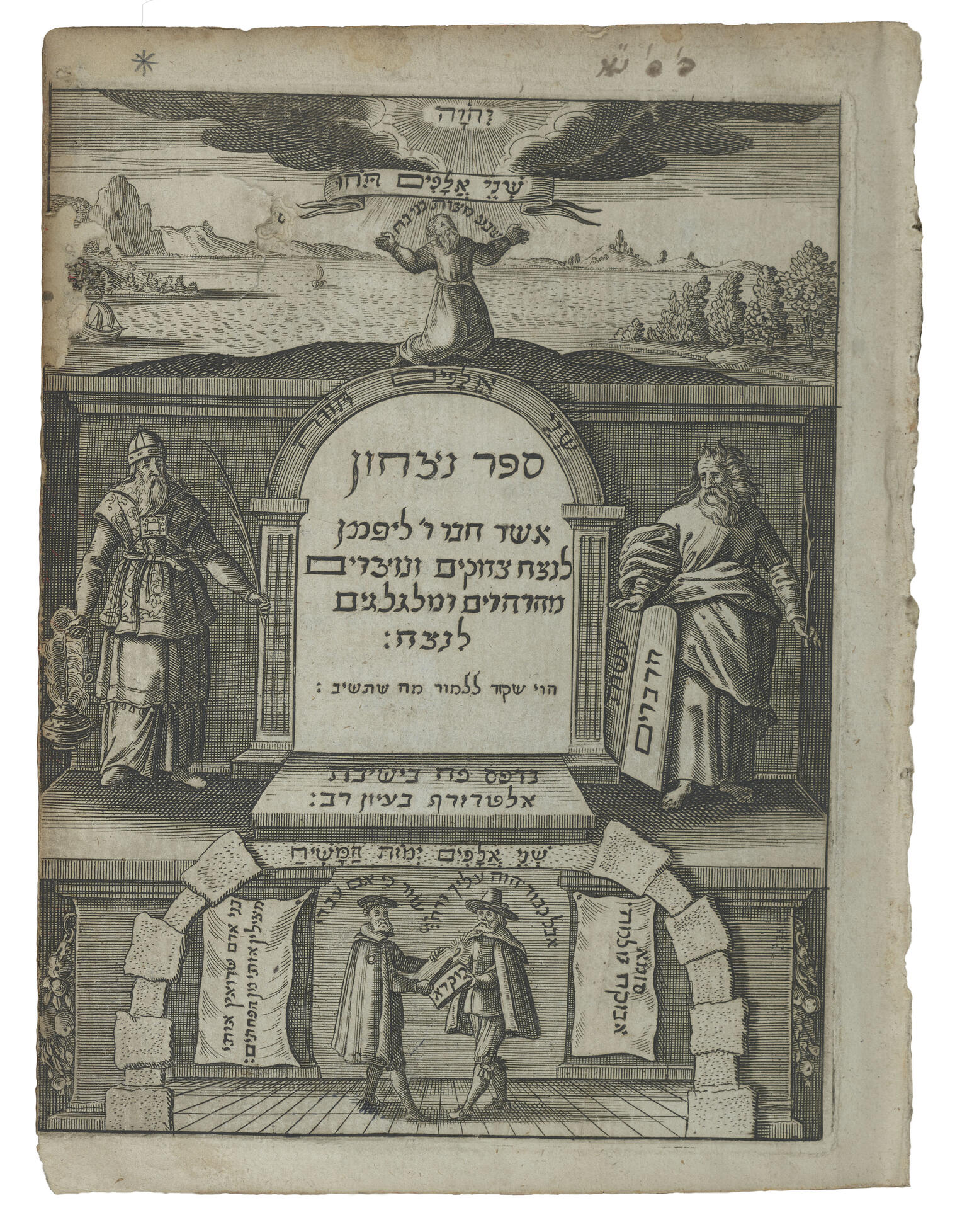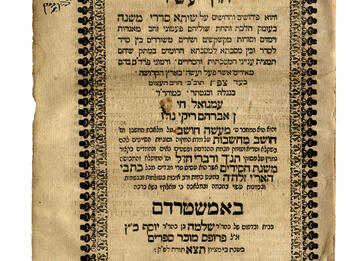Yom Tov Lipmann Mühlhausen’s Sefer ha-nitsaḥon
Yom Tov Lipmann Mühlhausen
Theodore Hackspan
Late 14th to Early 15th Century

Creator Bio
Yom Tov Lipmann Mühlhausen
Possibly of Alsatian origin, rabbi, philosopher, kabbalist, and polemicist Yom Tov Lippman Mühlhausen lived in Bohemia. An erudite scholar with a great command of halakhah, commentaries, the works of the German pietists, Spanish kabbalah, and Maimonidean literature, Mühlhausen survived a massacre in Prague in 1389 and witnessed other historic events, such as the Hussite uprising. Accordingly, his writings constitute an important source of information on this period. Mühlhausen visited various communities in Bohemia, Poland, and Austria, instituting takkanot (Jewish communal regulations) to combat what he saw as lax adherence to halakhah. In 1407, he was appointed as judge of the Jewish community in Prague, and most of his written texts date from this period onwards. Later, he served on the Council of Erfurt (consisting of the council of heads of Ashkenazi communities). Mühlhausen also conducted polemics with various clerical figures. His anti-Christian polemic Sefer nitsaḥon, written in 1390, circulated extensively in manuscript form until it was published by a priest in the seventeenth century. Over the years, it elicited many refutations. Other works by Mühlhausen include an influential text concerning the meaning of the letters (Sefer alfa beta, Book of the Alphabet), kabbalistic texts, prayers and piyyutim, and a work concerning the thirteen attributes of God.
Creator Bio
Theodore Hackspan
Theodore Hackspan was a Lutheran printer affiliated with the University of Altdorf, Switzerland. He was especially interested in Jewish works.
Related Guide
Early Modern Rabbis and Intellectuals on the Move
Carrying books and knowledge, itinerant rabbis and scholars traveled between communities, facilitating cultural exchange.
Related Guide
Education and Scholarship
The early modern period featured educational reforms, anti-Christian polemics, and growing Jewish university participation.
Language:
Places:
You may also like
Tosafot Yom Tov (The Additions of Yom Tov)
‘Ets ḥayim (Tree of Life)
Commentary: On the Jerusalem Talmud
Shirat dodi (Song of My Beloved)



